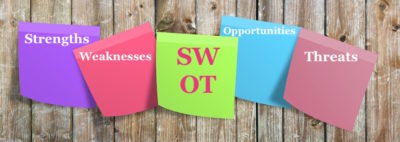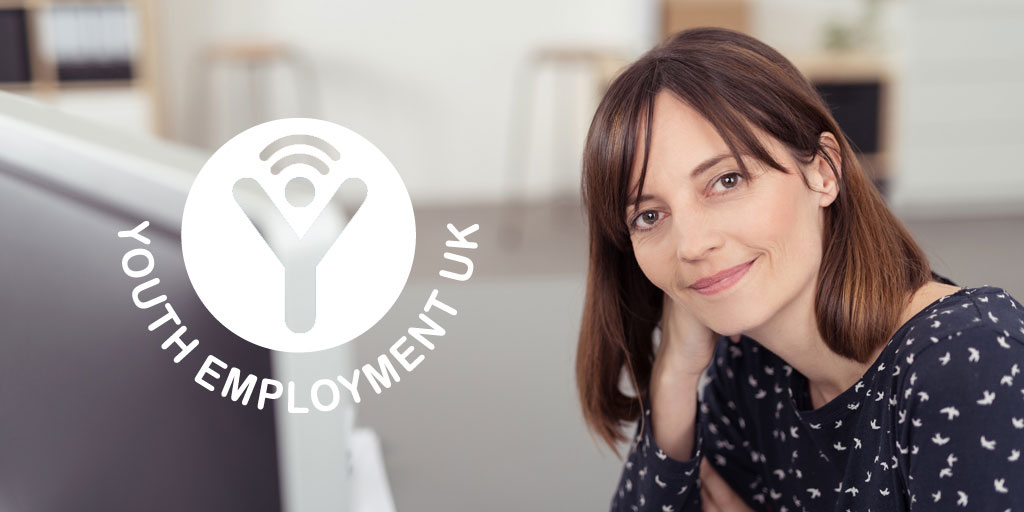What is accountability?
Accountability means taking ownership of something, and it’s a big part of developing your self-management skills. Everyone has weaknesses, and admitting that is the first step to accountability. This SWOT analysis exercise will help you take ownership of your weaknesses and help turn them into strengths!
What’s SWOT analysis?
SWOT analysis is one of the most useful self-discovery exercises you will ever do, and it will teach you more about yourself than any Buzzfeed quiz. Sorry, Buzzfeed. We love you really. It’s just that we love SWOT analysis more.
What does SWOT stand for? Each letter is a word:
Strengths
Weaknesses
Opportunities
Threats
You can use SWOT to create clever strategies for everything from marketing plans to business decisions. It’s often used when you have a goal in mind, to see what is helping you achieve that goal, and what holds you back.
You can also do a personal SWOT analysis on yourself. Here’s where it gets really interesting.
You can use personal SWOT analysis to:
- Understand your weaknesses when it comes to life, work and study
- Avoid future problems because you understand your weaknesses better
- Manage your weaknesses so they have less of an effect on your work and life
We could go on and on about how amazing SWOT analysis is, but for this exercise, we’re going to focus on W for Weaknesses. Ready? Got something to write with? Let’s begin…
Using personal SWOT analysis to look at your weaknesses in achieving a goal
Admitting your weaknesses and thinking about how to improve on them is a big part of accountability, or taking ownership of yourself and everything you do. Even just doing this exercise is a great way to build up your accountability and self-management skills.
There’s no point in lying and saying you have no weaknesses just so you don’t have to do this exercise. Nice try, but the truthometer deep inside you knows!
Ready to take ownership of your weaknesses? Let’s do this.
Step 1: Pick an achievable goal
Any goal. But let’s make it a skills and work-related goal. Is there a skill you want to improve on? Is there a work or study goal you want to achieve, like passing exams or successfully applying for a job or course? You can do this exercise without a goal, but it will help to sharpen your focus.
Step 2: List your weaknesses
Answer the questions below and BE AS HONEST AS YOU CAN. No-one is marking or judging you. The more honest you are, the easier it will be to consider areas for improvement and solutions to help you achieve your goals.
Think about how you see yourself, and about how others in education or the workplace might see you.
- What would the people you know see as your weaknesses? What would your teacher, lecturer, boss or line-manager see as your weaknesses?
- What are your negative habits when it comes to work, study and life? Are you late? Are you disorganised? Do you leave things until the last minute?
- What tasks do you steer clear of because you’re not confident about how well you would do them?
- What aspects of your personality might hold you back from achieving your goals? Do you get nervous when stressed? Are you afraid of public speaking? Do you feel overwhelmed when presented with multiple tasks? Do you get shy of sharing your ideas in meetings? Do you like starting projects but not finishing them? Do you like to rush through things so they’re done quickly, or take so long to make them perfect that they may not get finished at all?
- What resources do you lack that would help you achieve your goal? Would you benefit from more education, experience, time, or money?
Once you’ve answered the above questions you should have a good idea of what your weaknesses are in the world of work and study. If you have listed a goal, take a moment to think about how your listed weaknesses might affect how easily your goal is achieved.
Okay, that’s the harsh bit over and done with. Now let’s use personal SWOT analysis to see where we can make improvements and change things around!
Step 3: List your strengths
YOU HAVE SO MANY STRENGTHS. You may find it easier to list your weaknesses, but that’s because our weaknesses play in our minds like a stuck record so they’re often easier to think about. When you’re taking ownership of yourself, it’s also super-important to look at your strengths so you can see the big picture.
Answer the questions below:
- What do you do better than most people?
- What achievements are you most proud of?
- Which of the five Young Professionals skills are your strongest ones (out of self-belief, self-management, teamwork, problem solving, and communication)?
- What do other people in authority like your teacher, boss or manager see as your strengths
- What kind of tasks do you most enjoy completing at school or work?
- What are your unique positive qualities or skills?
- What expert or specialised knowledge do you have?
- What advantages do you have that not everyone has (like travel connections, people networks, and qualifications)?
Step 4: List your opportunities
Opportunities are outside conditions that could help you develop as a person or achieve your goal. Opportunities are useful, but you have to spot opportunities before you can make them work for you!
Answer these questions:
- How can technology and the internet help you improve your weaknesses, play to your strengths or achieve your goal?
- Are there any work or study opportunities you can take advantage of, like a careers adviser to talk to or a need for volunteers in the career field you’re interested in?
- Are competitors or rivals failing to do something important that you could take advantage of?
- Do you have a network of contacts who could give you advice or help you spot further opportunities?
- Do your strengths offer any opportunities?
- Could you open up new opportunities by working on your weaknesses?
Step 5: List your threats
Threats are outside situations, people or events that could slow your personal development or goal achievement if not addressed.
Answer these questions:
- What challenges or obstacles are you currently facing at work or in your studies?
- Is your job or the way things are done at school or work changing?
- Are any people in your work or place of education preventing you from achieving your goals, or competing with you for good results?
- Could any of your weaknesses lead to threats?
Step 6: Come up with a strategy to work on your weaknesses and help achieve your goals
- Once you’ve completed your lists, look through and ask yourself:
- Which weaknesses might hold me back from achieving my goal? Which don’t affect my goal?
- If I worked on my weaknesses, what kind of strengths would they become?
- How can my strengths help me find ways to work on my weaknesses and threats?
- How can my opportunities help me find ways to work on my weaknesses and threats?
Listing everything out can help you see things in a new light. You may find that doing this exercise helps you write down some achievable steps that could help your weaknesses AND bring you a step closer to achieving your work and study goals!
Your Young Professional Challenge:
You might have guessed 5 paragraphs ago what this weeks task would be, yes we are going to ask you to complete a SWOT analysis of yourself! We have created a little example here though to help you out!








